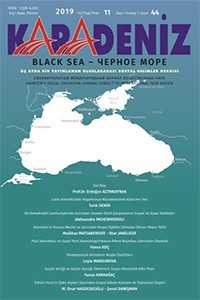ÂŞIK BAHATTİN YILDIZOĞLU’NU ANLAMAK
UNDERSTANDING MINSTREL BAHATTİN YILDIZOĞLU
Author(s): Erdoğan AltınkaynakSubject(s): Customs / Folklore, Turkish Literature
Published by: Kültür Ajans Tanıtım ve Organizasyon
Keywords: Minstrel Literature; Bahattin Yıldızoğlu; Kars; North East Anatolia; Minstrelsy Tradition; Minstrel's Cafes;
Summary/Abstract: Literary analysis and criticism in Turkey about folk literature, and minstrelsy in particular, have not been settled down yet. Literary criticism and analysis efforts are limited to presenting information about the structure of poems, trying to explain the quartets, and combining the life stories of minstrels with the lyrics. We are of the opinion that any study without focusing on the signs and symbols, analogies, similes and other poetic images with a view to the geographical features the minstrel lives in, and the social and cultural values of society reflected in poems will be lacking while analysing or criticising works of folk literature and minstrelsy. The North-East region of Turkey is different from the other regions in terms of etnical identity and geographical features. Settlers in Kars-Ardahan make their living by raising cattle. Those in Iğdır-Artvin can make their living through different types of agricultural activities. In Kars-Ardahan, the winters are extremely cold, and summers are cool. In this region, people of different etnicities and beliefs live. The religious sects are Alevites, Sunnis and Caferis, whereas the etnical identities are Azeris, Terekemens, Natives, Turkemens, Kurds and Zazas. Such a richness of identities make it possible for minstrels to create humour in abundance. Minstrel Bahattin Yıldızoğlu belongs to Minstrel Şenlik tradition, and is on the master level in the North East region. He has found opportunities to perform his art both abroad and in the country. He is famous for sarcastic humour of his own. Yıldızoğlu, whom we got to know in 1997, lived in a region based on cattle breeding, and successfully reflected the geographical, social and cultural features of this region in his works. In this study, we will focus on the elements influencing his art and performance with a view to some of his poetry. We aim that this analytic study will shed light upon prospective studies in terms of literary analysis and criticism.
Journal: Karadeniz Uluslararası Bilimsel Dergi
- Issue Year: 2019
- Issue No: 44
- Page Range: 241-251
- Page Count: 11
- Language: Turkish

